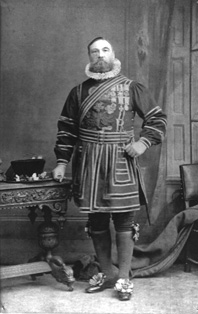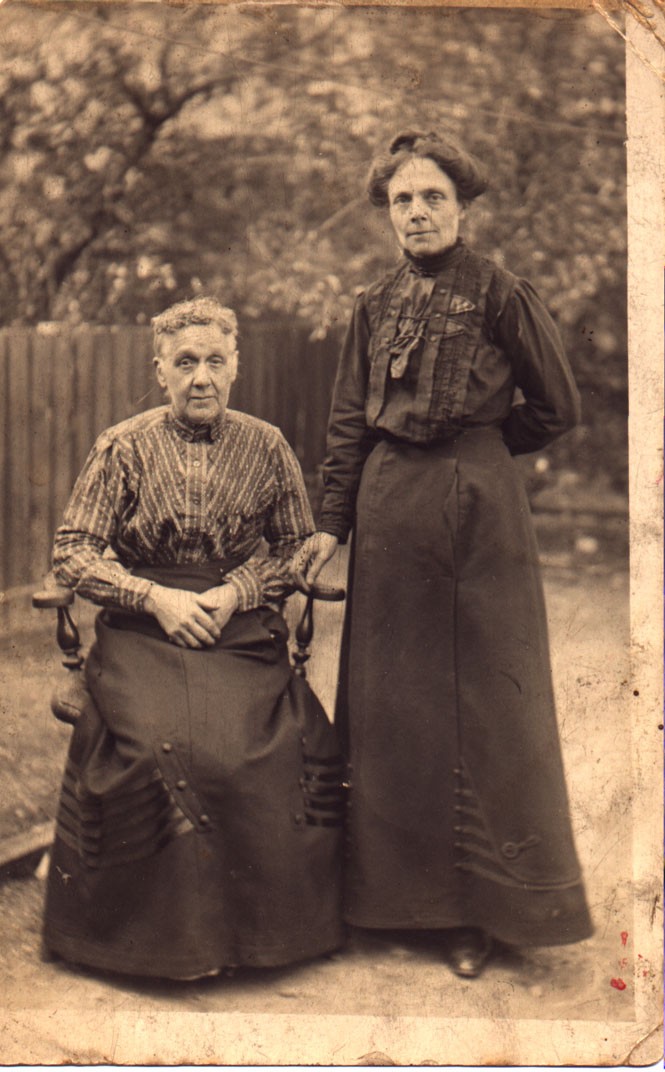Hall of fame: David Spence, VC
 Pat Spence contacted The Gazette to tell the story of David Spence, a relative of
her late husband, who was awarded the Victoria Cross in 1858 for gallantry during
the Indian Rebellion.
Pat Spence contacted The Gazette to tell the story of David Spence, a relative of
her late husband, who was awarded the Victoria Cross in 1858 for gallantry during
the Indian Rebellion.
David Spence was born in 1818 in Inverkeithing, Fife, Scotland, to Robert Spence, a mason, and Agnes Anderson.
David married Elspet Mathieson in 1835, when he was just 17 and Elspet was 16. They went on to have 12 children, though during their 16 years of absence in India, tragically, only three survived.
Noted as a blacksmith on the marriage register, David entered the 42nd Regiment, based in Aberdeen, soon after. He enlisted in the 9th Lancers Regiment in Belfast on 31 May 1838.
In 1842, having experienced the tragedy of losing two children in infancy, the couple moved to India with the regiment, leaving their son Robert in Scotland to be cared for by Elspet’s grandmother.
David fought in the Gwalior Campaign and was present at the battle of Punniar on 29 December 1843 (Gazette issue 20323). He was promoted to sergeant in January 1843.
The First Anglo-Sikh War (1845 to 1846)
David took part in the First Anglo-Sikh War (Sutlej Campaign) (Gazette Extraordinary 20588), in which the 9th Lancers lost just two men, and was present at the fierce and decisive battle of Sobraon on 10 February 1846, when heavy losses were inflicted on the enemy. This forced the Sikh Empire into a settlement with the East India Company at the Treaty of Lahore in 1846 (Gazette issue 20602).
The Second Anglo-Sikh War (1848 to 1849)
In February 1848, David was promoted to troop sergeant major and took part in the Passage of the Chenab on 4 December 1848, and the bloody battles at Goojerat (Gazette Extraordinary 20974) and Chillianwallah (Gazette Extraordinary 20969), under command of General Sir James Hope Grant, GCB (Gazette issue 22445).
In October 1850, David resigned his rank of sergeant, and in July 1851 was again promoted to troop sergeant major. It’s thought that David stayed in India with the regiment over the next few years, with his whereabouts traced by the births of his and Elspet’s children.
Private loss: letters from Elspet
On 15 June 1856, Elspet wrote a letter to her sister in Aberdeen that conveyed some of the desolation of losing their children, most recently Isabella Ann, age 5, and understandable concerns for her family – as well as her longing to return home. It also shows her strength of character and lack of complaint about what must have been terrible conditions in which to live and care for young children.
‘Our afflictions have been very heavy on us lately. Our poor children are as fresh in our memory as the first day we lost them and dear Issie having attained the age when they become so engaging being five years old. It was a heavy heavy trial but it was God’s will and we must submit for He knows what is best for us.’
The Indian Rebellion, 1857 to 1858
The outbreak of the Indian Rebellion in May 1857 meant that plans for a summer in the Himalayan mountains for Elspet and Agnes, their only remaining child in India, were cancelled.
David was present at the early battle of Badli-ke-Serai on the 8 June 1857 (Gazette issue 22050), and remained in Delhi throughout the siege, including the assault and capture of the city on 14 September 1857.
Such was the reported barbarity of the sepoys in their treatment of captured British women and children, most notably at the Siege of Cawnpore, that the British retaliated and were nicknamed ‘The Devil’s Wind’, due to their thirst for revenge.
A Gazette Extraordinary (Gazette issue 22062) on 14 November 1857 reports on the prolonged defence of the residency within the city of Lucknow, ‘Whatever may be the motives and passions by which the mutinous soldiery, and those who are leagued with them, have been instigated to faithlessness, rebellion, and crimes at which the heart sickens, it is certain that they have found encouragement in the delusive belief that India was weakly guarded by England, and that before the Government could gather together its strength against them, their ends would be gained. They are now undeceived.’
Victoria Cross for conspicuous gallantry
On 17 January 1858, under Sir James Hope Grant, the 9th Lancers were sent, along with other regiments, to attack a column of 10,000 rebels. Marching all night, they found the enemy at 8am posted at the village of Sutia, half a mile from Shumshabad. As soon as the rebels saw them, they opened fire.
During this battle, Spence seems to have got separated from his men after a charge, and on hearing a cry for help, saw his comrade, Private Kidd, lying wounded and pinned beneath his disabled horse, surrounded by a ring of rebels. Spence did not hesitate for a second: his Lance point dropped and his spurs kicked home, and he crashed down upon the sepoys at a gallop. Alone and outnumbered, Spence cut his way to the wounded man, extricated him from his position beneath the wounded charger and finally, and at great risk to his own life, brought him to safety.
Spence’s citation is as follows (Gazette issue 22212):
Troop Serjeant-Major Spence
Date of Act of Bravery, 17th January, 1858
For conspicuous gallantry on the 17th of January, 1858, at Shumsabad, in going to the assistance of Private Kidd, who had been wounded, and his horse disabled, and bringing him out from a large number of rebels. Despatch from Major-General Sir James Hope Grant, K.C.B., dated 8th April, 1858’
David returned to Lucknow with the regiment for a third time during August 1858. In the battles and charges in Lucknow, the 9th Lancers gained three more VCs, a total of 12 awarded to the regiment for actions in the Indian Rebellion. (See gazetted Lucknow VCs: Gazette issue 22154, 22283 and 22357.)
Leaving India
David, Elspet, their only surviving daughter, Agnes, and the regiment embarked at Calcutta in April 1859. Five months later, on 4 September 1859, after 17 years and 122 days in India, they arrived in Britain, off Spithead.
David was promoted to regimental sergeant major in October 1859, and was presented with the VC by Queen Victoria at Windsor Castle in January 1860.
On 13 October 1862, age 44, he was discharged from the 9th Lancers in Brighton, Sussex, at his own request. The following is taken from his discharge papers of that date: ‘Service up to this day which he is entitled to reckon amounts to 24 YEARS 135 DAYS …. during which period he served abroad 16 and 8/12 years’. He was to be given a pension, after 24 years of service. The papers also document David to be 5ft 10 and-a-half inches, with hazel eyes and a fresh complexion.
During his military career, David was awarded the following medals:
- Victoria Cross
- Punniar Star
- Sutlej Medal, Sobraon
- Punjab Medal with two bars, Chillionwallah and Goojerat
- Indian Mutiny Medal with three bars, Delhi, Relief of Lucknow and Lucknow
- Long Service and Good Conduct Medal
The final years
David Spence was appointed to Her Majesty’s Bodyguard in 1862 as a  Yeoman of the Guard. The only photo of him available shows him in his yeoman’s uniform,
proudly displaying his medals (pictured, top right).
Yeoman of the Guard. The only photo of him available shows him in his yeoman’s uniform,
proudly displaying his medals (pictured, top right).
The family moved to Falmouth, Cornwall, where David was employed as a mounted coastguard and began to adapt back to civilian life.
In 1864, Elspet died of pneumonia and typhoid fever, age 45, and was buried in Falmouth. Six months after the death of his wife, David married Mary Pascoe (pictured, seated), an innkeeper’s daughter from Falmouth, then pregnant with twins. They went on to have nine children. Mary lived a long life, and died in 1937.
On 17 April 1877, David, age 59, collapsed in the street and died of a heart attack. On his death certificate his occupation is marked as army pensioner.
On 21 April, David was buried in Lambeth Cemetery, Blackshaw Road, Tooting. His grave number is 175 SEC A 2 GEN and remains unmarked.
David’s regiments, including the 9th Lancers and Yeomen of the Guard, along with the Victoria Cross Trust in the UK, are working with family members to install an official VC memorial stone on David's grave.
David’s medals can be viewed at the 9th/12th Royal Lancers Museum at the Derby Museum.
Our special thanks to researchers, Martin and Pat Short, descendants of David’s second marriage to Mary Pascoe, for their extensive research, carried out over a number of years.
Have you discovered something memorable about a family member in The Gazette? Tell us via our 350 page.
